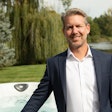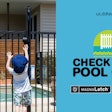
At last year's PSP Expo in Orlando, APSP met to gauge interest in developing a group that would focus on the commercial side of the pool and spa industry.
The response was overwhelming. The event played out to a standing-room-only crowd, with a vigorous exchange of ideas among all assembled.
“As we continued on in that meeting and asked questions of what people were interested in, we found a great alignment within the entire industry,” says Donna Williams, chief marketing officer and vice president at POOLCORP, and chair-elect of the APSP board.
In response to the Expo meeting, APSP created the Commercial Council. Made up of leaders from across the industry, the eight-member group is charged with developing industry responses to challenges that are specific to those designing, constructing, operating and servicing commercial pools and spas.
As APSP President and CEO Lawrence Caniglia said at the time of the group’s launch in April: “As APSP sharpens our focus on advancing the industry and its interests, we look forward to strengthening the commercial pool and spa industry segment. The creation of this council helps us keep moving the industry forward.”
TASK NO. 1
The council’s first priority was immediately clear. At its first official meeting in May, the council got to work on bringing the Model Aquatic Health Code and the International Swimming Pool & Spa Code into alignment.
“The goal is to bring the two together, so no matter where the information comes from — which document — it’s going to read the same way,” explains Jason Schallock, the general manager at Anderson Poolworks and Commercial Council co-chair. “The health official and the building official will be looking at the same information, even though they’re referencing two different documents.”
Under the current code system, different parties might refer to guiding regulations that are in conflict, at least once individual interpretation comes into play. A pool build might already be underway before the disparities are identified, leaving operators, general contractors, government officials and others bogged down in the frustrating process of untangling the mess.
RELATED: APSP Announces New Commercial Council
“You’ve got all these different entities trying to give their piece, and now you’ve got to try and find a common ground between all of that,” says Derek Downey, principal with Legal Pools and Commercial Council co-chair. “The APSP Commercial Council is bringing all those players to the table from the very beginning.”
Both codes have their respective processes for making sure the information is accurate. Council members are developing recommendations in accordance with the differing pathways the codes will take before being locked in place. It’s a tricky puzzle, but that only underscores the value in getting the documents synced.
The Commercial Council didn’t quite catch the ideal timeline in the code cycle, but its efforts are laying groundwork for the near future. They’ve already engaged in productive discussions with officials at the CDC and the National Swimming Pool Foundation.
“During our initial meeting to help align these two documents, we missed the Model Aquatic Health Code cycle, but we were able to get quite a few suggestions from our initial meetings with the CDC into the I-codes,” says Schallock, adding that the council is developing a collaborative rather than an adversarial relationship with the agencies.
TEACHING TOOLS
The hope is that the codes will be finessed so they make sense to all parties, regardless of background and technical expertise. If the codes are written in plain language, it makes it far easier for everyone to complete their work in full accordance with the rules.
Even so, these are still regulatory documents, and all the efforts at pruning aren’t likely to fully prevent them from winding up fairly dense. Education will be key in getting everyone to understand what’s in them.
“We need a single-source location for everybody to go to for information, and we need to have the opportunity for all players to be educated,” Downey says.
As it’s currently envisioned, the online tool will provide a clearinghouse for information and feature easy, intuitive navigation. State and regional codes will be available with quick links. The council wants to provide a resource that users can count on for consistency, thoroughness and timely updates.
The alignment of the codes and the creation of connected learning tools demonstrate the thoroughness the council plans to bring to all its endeavors, and continued input from a variety of industry players will prove invaluable.
“They have incredible knowledge and experience,” Williams says. “And they just want to make sure that expertise is shared in a uniform way through the standard. I see these guys, and I see them spending hours and hours and hours getting it right. They’re doing it for the good of the industry.”
SAFETY FIRST
Downey is also quick to note the Commercial Council isn’t trying to circumvent the safety precautions that often drive the codes.
“We need to protect bathers, patrons and the owners of the swimming pools, and create very safe environments,” Downey insists. “At the same time, we want to stay away from the kind of overly stringent regulations that don’t really improve safety but make it impossible to build a pool.”
RELATED: APSP's 2017 In Review: An Aggressive Agenda
Because these commercial pools and spas are by definition public spaces, the levels of regulatory scrutiny are exceedingly high, especially at the federal level. And when something goes wrong at a commercial pool, it’s more likely to make the news and catch the attention of politicians who may be too quick to impose protections that burden the industry without increasing public safety.
“There’s that scrutiny, we want to do things right,” she says. “We want to have the visibility within this industry that pools are safe, that they’re great for people to enjoy. We don’t want them to become a negative in the media.”
ONGOING WORK
The Commercial Council is off to a rousing start, but it’s only the beginning.
“I see it as ongoing, and I see it as a very active council,” Williams says.
For the initial phase, the council is meeting frequently, either in person or through conference calls. Eventually, leaders hope to meet quarterly.
Under the current model, council members serve on a volunteer basis and have one-year terms. In addition to Downey and Schallock, the charter members include Steve Barnes of AquaStar Pool Products; Dennis Berkshire of Aquatic Design Group; Kris Bridges of the City of Martinsville, Va.; Kenneth Gregory of Pentair Aquatic Systems; John Mason of Deschutes County Health Services; Stephen Neville of Island Construction Corporation; and Doug Winkler of Winkler Pool Management.
“The team that’s been put together is a great cross-section,” says Downey, noting the participation of manufacturers, risk managers and consultants, installers, pool management, code and building officials, designers, and technicians.
The council is also empowered to create subcommittees and task forces to focus more intently on particular issues. In those instances, they can draw in additional contributors from all corners of the industry. Anyone in the industry is welcome to participate.
One of the first subgroups will focus on combining ANSI-1 and ANSI-2, and then convert ANSI-2 into an operational and maintenance code. Again, the plan is to work with the regulators to develop language for the codes that is in straightforward, easy-to-understand language.
“It’s very important that we get it right, that we’re aligned in what should or should not be done,” says Williams.




































